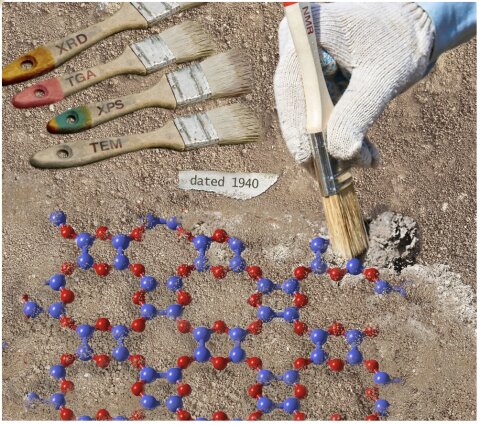In an endeavor to discover novel 2D materials, a group of scientists from Ames National Laboratory has successfully determined the structure of boron monoxide. This compound, first discovered in the 1940s, has garnered significant research interest over the years. However, due to technological limitations of the time, scientists were unable to unravel its structure. Leveraging new NMR methods and previously unavailable analytical tools, the team from Ames Lab has finally unraveled the structure of this seemingly simple material.
“Initially, we weren’t specifically focused on studying this particular material,” stated Frédéric Perras, a scientist from Ames Lab and a member of the research team. “Our original aim was to develop a carbon-free covalent organic framework.” Covalent organic frameworks are low-density and porous materials with periodically ordered crystal structures. They are composed of organic molecules linked together through covalent bonds.
“However, after numerous attempts at synthesis, we were unable to obtain a highly crystalline covalent organic framework material,” explained Wenyu Huang, another scientist from Ames Lab and a team member. Perras and Huang are both interested in these materials for alternative energy applications.
The team eventually ended up creating a boron-based material that proved challenging to characterize. During their research, they stumbled upon literature dating back to 1940, which contained descriptions of the exact reaction the team was working on, as well as the synthesis of a material called boron monoxide. Unfortunately, previous scientists were unable to determine the structure of this material. Further details about this research can be found in the paper published in the Journal of the American Chemical Society.
Fortunately, technological advancements in materials research since the 1940s enabled a breakthrough. “Leveraging our expertise in nuclear magnetic resonance spectroscopy, and the development of new methods that were unavailable to researchers in the 1940s, 50s, and 60s, we saw an opportunity to solve this century-old mystery,” Perras said.
Perras elaborated on the process of creating boron monoxide, which involves using a precursor molecule acting as building blocks. These molecules adhere through dehydration reactions. Understanding the structure comes down to determining the physical arrangement of these blocks. “Thus, we developed NMR methods that allow us to study the orientation of these building blocks in relation to each other. Basically, we discovered that adjacent precursor molecules arrange themselves parallel to each other, which aligns with one of the previously proposed models,” Perras explained.
“We also employed other techniques, such as powder X-ray diffraction, which revealed that these nanosheets organize themselves into what is known as a turbostratic arrangement,” added Perras. He likened these stacked nanosheets to a pile of paper thrown onto a desk. Once they land, they may not be perfectly aligned, but they form a stack.
According to Perras, there has been a recent surge of interest in synthesizing new boron-based 2D materials. Understanding the structure of boron monoxide could lead to the synthesis of other valuable boron-based 2D materials. Perras expressed excitement over finally solving the structure of such a fundamental material, stating, “What really excites me is the fact that this is an age-old problem. It’s such a basic material; when you write down the chemical formula, it’s BO. So, it’s intriguing that we have finally unraveled its structure,” said Perras.
More information:
Frédéric A. Perras et al, The Structure of Boron Monoxide, Journal of the American Chemical Society (2023). DOI: 10.1021/jacs.3c02070
Citation:
Structure of elusive boron monoxide finally determined after 83 years (2023, July 18)
retrieved 18 July 2023
from https://phys.org/news/2023-07-elusive-boron-monoxide-years.html
This document is subject to copyright. Apart from any fair dealing for the purpose of private study or research, no
part may be reproduced without the written permission. The content is provided for information purposes only.
Denial of responsibility! SamacharCentrl is an automatic aggregator of Global media. In each content, the hyperlink to the primary source is specified. All trademarks belong to their rightful owners, and all materials to their authors. For any complaint, please reach us at – [email protected]. We will take necessary action within 24 hours.

Shambhu Kumar is a science communicator, making complex scientific topics accessible to all. His articles explore breakthroughs in various scientific disciplines, from space exploration to cutting-edge research.


